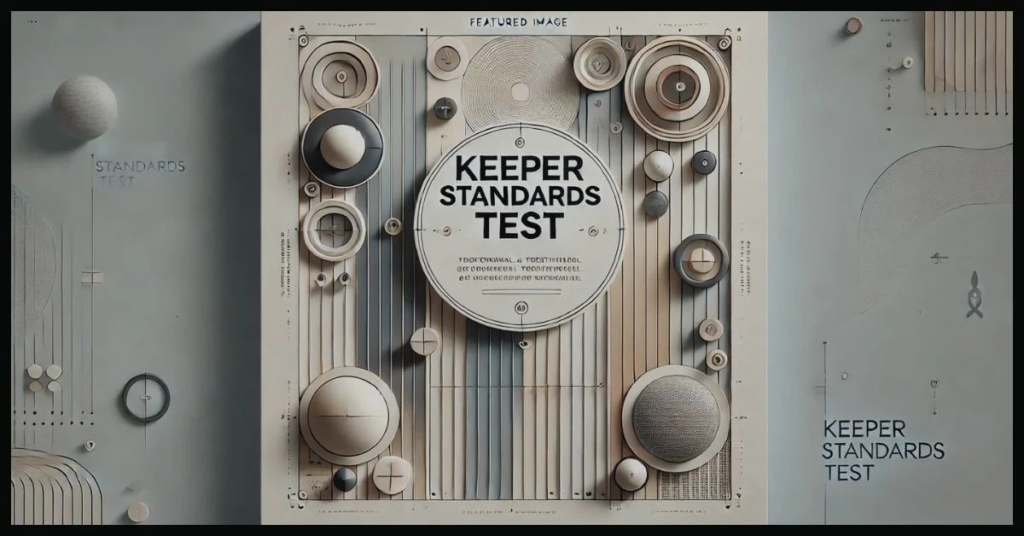The Keeper Standards Test is a specialized assessment used to measure the skill level, fitness, and tactical understanding of goalkeepers. It is designed to evaluate the abilities that are crucial for success in the position, such as agility, reflexes, decision-making, and communication. This test helps goalkeepers identify areas for improvement and allows coaches to gauge a player’s readiness for competitive play. The test has become a benchmark in the United States for goalkeepers aiming to elevate their game to the next level.
What Does the Keeper Standards Test Measure?
The Keeper Standards Test evaluates a wide range of skills that are essential for a goalkeeper’s performance. At its core, the test assesses five main areas:
- Agility: Goalkeepers must move quickly and effectively, whether diving to save a shot or recovering from a missed punch. Agility tests help assess a player’s ability to change direction swiftly and maintain balance under pressure.
- Reflexes: This is a crucial skill for goalkeepers, as they often need to react within milliseconds to make saves. The test includes exercises designed to measure a player’s reaction speed, particularly in close-range situations.
- Positioning: A well-positioned goalkeeper can make saves without needing to dive spectacularly. The test evaluates a player’s understanding of positioning in various game scenarios, ensuring they are always in the best spot to make a save.
- Decision-Making: Good goalkeepers aren’t just reactive—they anticipate threats and make quick decisions about when to charge out, catch, or punch the ball. This part of the test examines how effectively a player reads the game.
- Communication: Goalkeepers must direct their defense, ensuring that players are marking their opponents and covering potential threats. The test looks at a goalkeeper’s ability to communicate clearly and confidently with teammates.
Why Is the Keeper Standards Test Important for Goalies?
The Keeper Standards Test holds immense value for goalkeepers for several reasons. First and foremost, it provides an objective measurement of a goalkeeper’s current abilities, offering insights that can be used to guide further development. For young goalkeepers, it highlights specific skills that need improvement, whether it’s enhancing agility, sharpening reflexes, or improving decision-making under pressure.
Additionally, the test is often used by coaches to identify talent and determine whether a player is ready to move up to a higher level of competition. For aspiring professional goalkeepers, the Keeper Standards Test can act as a benchmark to gauge whether they’re meeting the necessary standards expected at elite levels. In essence, the test is not just a measure of current ability but also a roadmap for future growth and success.
How to Prepare for the Keeper Standards Test
Preparation is key to performing well in the Keeper Standards Test. Proper preparation not only enhances physical capabilities but also builds the mental toughness necessary to excel. Here are some key steps to help you get ready:

Key Skills to Focus On
- Footwork: One of the most crucial skills for any goalkeeper is quick, efficient footwork. Good footwork allows you to position yourself correctly, close down angles, and make saves with greater ease. Drills like ladder exercises or cone shuffles can help improve your foot speed and agility.
- Reaction Time: Quick reflexes can be the difference between a save and a goal. Incorporate reaction drills, such as rapid ball throws, into your training to simulate real match situations. Focus on responding to unexpected stimuli quickly and efficiently.
- Catching and Handling: Whether you’re dealing with high crosses or hard shots, being able to securely catch or punch the ball is crucial. Practice with different types of shots and crosses to improve your catching ability and decision-making regarding when to punch versus catch.
Best Drills for Goalkeepers
- Cone Drills for Agility: Set up cones in a zig-zag pattern and practice quick directional changes. This helps improve agility and footwork.
- Wall Reflex Training: Stand about 10 feet from a wall and have a partner throw or kick balls at you. Your goal is to catch or deflect the ball before it bounces. This sharpens your reflexes.
- Cross Handling Drills: Practice dealing with crosses from various angles to improve your ability to judge flight paths and make decisions under pressure.
How Often Should You Train?
Goalkeepers should aim to train at least 3-4 times a week, focusing on different aspects of their game each session. Agility and reflex drills can be performed every day, while more intense goalkeeping sessions involving catching, handling, and game-simulation exercises should be spread out to avoid fatigue. Mental preparation, such as watching game footage and analyzing positioning, should also be incorporated regularly.
What Happens During the Keeper Standards Test?
During the Keeper Standards Test, goalkeepers are put through a series of drills and scenarios designed to test various aspects of their abilities. The test typically begins with warm-up exercises, followed by drills that focus on agility, footwork, and positioning. Goalkeepers may be asked to save a variety of shots from different angles, deal with crosses, and distribute the ball to teammates under pressure.
Additionally, reaction tests are performed to gauge a goalkeeper’s ability to make split-second saves. These drills often involve close-range shots and unexpected stimuli to ensure that the goalkeeper is prepared for real-game situations. The final component of the test usually assesses a goalkeeper’s decision-making skills in game-like scenarios, where they must decide whether to catch, punch, or dive to prevent a goal.
How Are Scores Given in the Keeper Standards Test?
Scores in the Keeper Standards Test are usually based on both qualitative and quantitative assessments. Coaches will evaluate the goalkeeper’s performance in each drill, looking at aspects like speed, technique, and decision-making. In some cases, points may be awarded for specific actions, such as saving a certain number of shots or successfully handling crosses.
The overall score is a composite of how well the goalkeeper performed in each area, providing a holistic view of their strengths and weaknesses. Coaches use this score to identify areas for improvement and to determine whether the goalkeeper is ready to compete at a higher level.
Tips to Pass the Keeper Standards Test with Confidence
Success in the Keeper Standards Test requires more than just physical preparation. Mental readiness plays an equally important role. Here are some tips to help you approach the test with confidence:

- Stay Calm Under Pressure: One of the most important qualities for a goalkeeper is the ability to stay calm in high-pressure situations. During the test, focus on staying composed, even if you make a mistake. Recover quickly and keep your attention on the next task.
- Visualize Success: Mental imagery can be a powerful tool for athletes. Before the test, spend time visualizing yourself performing well in each drill. This mental preparation can boost your confidence and help you stay focused.
- Focus on Fundamentals: During the test, don’t try to perform flashy saves or moves that you haven’t practiced. Stick to the basics—good footwork, solid positioning, and quick decision-making.
Common Mistakes to Avoid
- Overcommitting to Saves: Don’t dive too early or rush out of goal unless it’s necessary. Stay composed and wait for the right moment to make a move.
- Poor Communication: Failing to communicate with defenders can lead to unnecessary goals. Make sure to direct your teammates throughout the test.
- Neglecting Positioning: Always be aware of your position relative to the goal and the ball. Poor positioning often results in missed saves.
Best Ways to Improve Reflexes
- Reaction Balls: Use reaction balls during training to improve your hand-eye coordination and reflexes. These balls bounce unpredictably, forcing you to react quickly.
- Multiball Drills: Have a partner throw multiple balls at you in rapid succession. This forces you to react quickly and improve your ability to handle consecutive shots.
The Right Gear for Goalkeepers
- Gloves: Invest in high-quality goalkeeper gloves that provide good grip and padding to protect your hands during saves.
- Cleats: Ensure you have the right type of cleats for your playing surface, whether it’s grass or turf. Good traction is essential for quick movements.
- Shin Guards: Always wear protective gear like shin guards to avoid injury during intense drills and tests.
What Do Coaches Look for in the Keeper Standards Test?
Coaches are looking for goalkeepers who demonstrate a strong understanding of the fundamentals, as well as the ability to perform under pressure. They want to see good footwork, quick reflexes, and sound decision-making. Communication with defenders is another critical aspect that coaches assess. Overall, coaches are looking for goalkeepers who not only have the technical skills but also the mental fortitude to handle the challenges of the position.
The Bottom Line
The Keeper Standards Test is a comprehensive evaluation of a goalkeeper’s skills, covering everything from agility and reflexes to decision-making and communication. Preparing for this test requires dedication, focus, and regular training. By honing your skills and staying mentally sharp, you can pass the Keeper Standards Test and take your goalkeeping abilities to the next level.